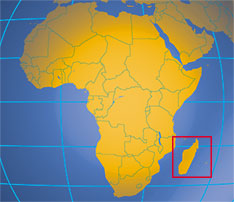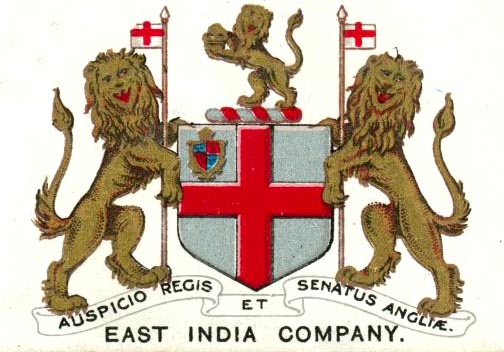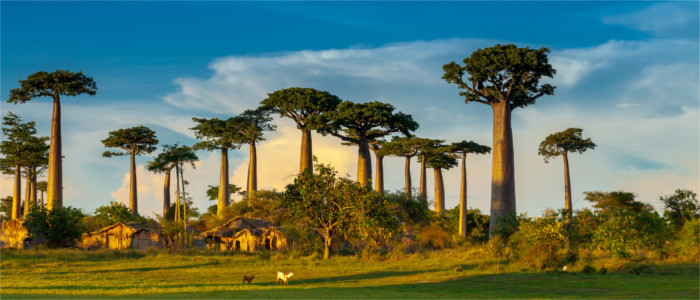Madagascar is the fourth
largest island in the world. It lies off the coast of Mozambique, on the
eastern coast of Africa. Geologically, it is a separation of India’s tectonic
plate. The animals of the island have been developing in isolation for 88
million years. 80% of Madagascar’s plants and animals are found nowhere else.

The island’s climate is
tropical, but a high, flat plateau in the center provide lower temperatures
that have encouraged human habitation and have been planted in terraced rice
fields.
Humans came to the island
about 3000 years ago, but apparently only on foraging expeditions. Permanent
human habitation started between 350 BC and 550 AD, probably by people who arrived
on outrigger canoes from Borneo. Bantu people from Mozambique arrived shortly
thereafter. The current name for the ethic group of the islands is Malagasy,
which is also what the islanders call their home.

The name Madagascar was
coined by the famous explorer Marco Polo who wrote about the island. Though
other explorers tried to name the island after saints, the name Madagascar stuck,
possibly for no other reason than its pleasing sense of the exotic.
The poster child for
Madagascar’s native wildlife is the ring tailed lemur. There are over 100 different
species of lemurs on the island, and lemur are found nowhere else. The island
hosts over 260 species of lizard, probably all descendants from just a few
individuals who reached the island.
A catlike animal called a
fossa is the largest predator on the island, but at only 31 inches long and maximum
weight of 19 pounds, they are not generally dangerous to humans.
Until about 1700, the
inhabitants of Madagascar ruled the island through a shifting group of tribal
coalitions. But at about this time, the pirates arrived.
Europeans had finally
reached a sufficient level of technology that they could sail around Africa
with general success. When they did so, the stumbled across a thriving commercial
culture. India, Arabia, and Southeast Asia all traded through the region, and
Europeans wanted what these people had.
The East India Company, a
corporation, had been founded by Queen Elizabeth I in 1600. They had struggled
against distance, weather and competition from the Dutch. But even the smallest
success had the possibility of enormous financial gains.

Madagascar and the surrounding
smaller islands were the prefect base for pirate raids on these trading ships.
Pirates robbed East India ships, Arab traders, and pilgrims going to and from
the holy city of Mecca through the mouth of the Red Sea.
At one time the island of
St Mary had a permanent colony of 1,500 pirates and traders. Dishonest
merchants could pick up silk, cotton and spices form the pirates and transport
these products to ports like New York and Boston, where they could be sold at a
huge profit to people who didn’t ask too many questions.

The pirate nation of Libertatia
may or may not have been a fiction. But it held a fir place in the hearts and
imaginations of pirates world-wide. Supposedly the nation had been founded by a
pirate named Captain Mission. According to the pirates, it was a direct
democracy. The pirates elected officials to run the colony, but encouraged
these people not to think of themselves as rulers, but as public servants, not
in any way above the rest of the citizens.
The historian Marcus
Riker described the pirates this way:
“
These pirates who settled in Libertalia would be
"vigilant Guardians of the People's Rights and Liberties"; they would
stand as "Barriers against the Rich and Powerful" of their day. By
waging war on behalf of "the Oppressed" against the
"Oppressors," they would see that "Justice was equally
distributed."
The colony was supposed
to be half-white and half-black, the races intermingled freely. Mission was
supposed to have been a French sailor, born in Provance and converted to a
belief in atheist, socialist anarchy by “a lewd priest” that he sailed with.
When the sailors of Mission’s ship mutinied, they elected him captain, and he
then created the pirate nation.

The pirates in this
colony became farmers and married native women. They also freed many African,
Indian and Arabian slaves, who they encouraged to join their society.
Individuals who chose to make money by robbing ships simply turned their plunder
over to the common treasury. Even farmer’s fields were held in common.
Was it true? The pirates
certainly believed it was true. When pirates began to over-run Nassau in the
Bahamas, they claimed that they “would make another Madagascar of the island.”
One thing which definitely
attracted pirates to the area was the fact that the locals practiced polygamy.
A pirate flush with gold and armed with firearms could hammer out a veritable
kingdom on the island.
Visitors describe family compounds
surrounded by walls and set apart in jungle terrain. Pirate families were huge,
including many women and dozens of children. These visitors were horrified to
see that any remnants of European clothing had fallen to rags, and the pirate
lords dressed in native style (which was probably a lot more comfortable than
the European style.)
 |
| Thomas Tew |
We have some evidence
that known pirates such as Thomas Cocklyn, Thomas Tew and Olivier Levasseur lived
in or around Madagascar. Levasseur returned there for a number of years.
But the island life,
while pleasant and peaceful, was somewhat boring. Levasseur first ask for a pardon
for his crimes, but upon learning that he would have to give back some of his
stolen money, he returned to his lair. He was killed shortly thereafter, caught
on a pirating mission that he had probably started simply to have something
exciting to do.
The pirates did not so
much leave Madagascar as they and their descendants were simply absorbed into
the local population. They did leave behind a spirit of freedom. Madagascar
become a kingdom in order to stand off the increasingly invasive colonial powers.
It spent a short time as a French colony, and it became an independent nation
in 1960. Today it is a semi-presidential representative democratic multi-party
republic (whew!) with a small industry in pirate tourism, among other things.
noice memes bruh
ReplyDeleteThis comment has been removed by the author.
ReplyDelete